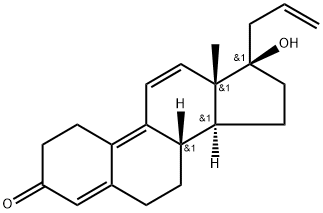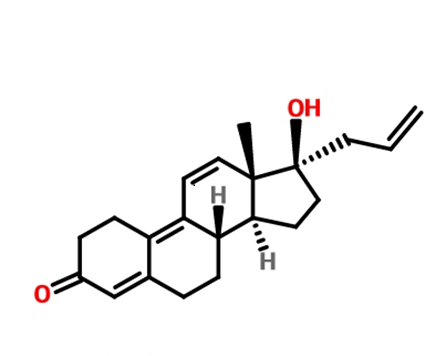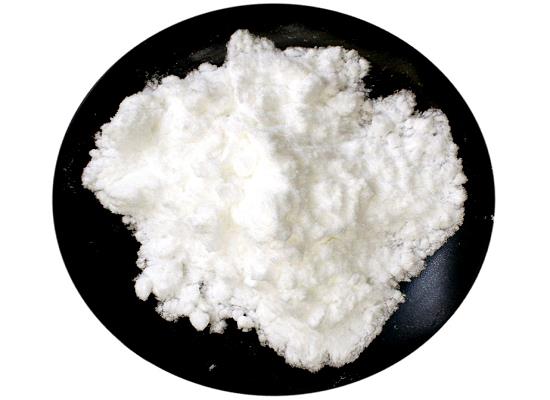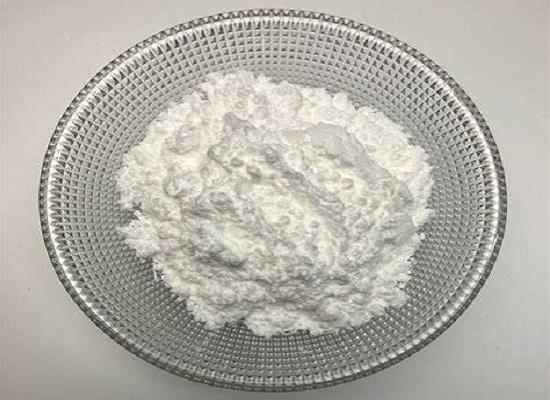Application of Altrenogest
Background and overview[1][2]
Altrenogest, also known as allergen, is a synthetic progesterone that regulates the estrus cycle of female animals by inhibiting the secretion of gonadotropins. The U.S. Food and Drug Administration (FDA) first approved the regulation of the estrus cycle of horses in 1983, the trade name is ReguGMate (Intervet); in 2003, it was approved for regulation of the estrus cycle of pigs, and the trade name was Matrix (Intervet). Wei); In 2012, the tetraenestrone product (Shihua) under the trade name AltreGyn was approved to be used for simultaneous estrus of horses and pigs and to regulate the batch production rhythm of pigs.
In addition, many veterinarians use it to regulate or maintain the pregnancy of animals, which is an off-label application. During the breeding season, estrus racehorses will exhibit tail-lifting, frequent mooing, frequent urination, and squatting. These behaviors can distract the racehorse, interfere with training, and reduce its performance. Tetraenestrone can inhibit the estrus of racing horses and ensure that they can train and compete normally during the breeding season. Oral tetraenestrone to mares at the recommended dose will not improve their competition ability. Therefore, use in the competition season is also in line with the competition rules.
In large-scale pig production, promoting sows to estrus at the same time is of great significance to the production and management of pig farms. Without human intervention, the estrus of the gilts is scattered, making it difficult to implement batch breeding and periodic management. Tetraestrone can control the estrus of sows artificially by inhibiting the secretion of hormones, more accurately grasp the reproductive cycle of sows, greatly increase the conception rate of the herd, effectively regulate the production rhythm of sows, and improve the performance and benefits of the pig farm. At present, foreign countries have used it as an essential estrus agent in pig production, and there is no substitute product.
Physical and chemical properties [1]
Tetraestrone is a derivative of C19-nortestosterone, its molecular formula is C21H26O2, its molecular weight is 310.43, and its CAS registration number is 850-52-2. The chemical name is 17G allyl G17β-hydroxyethyl-4,9,11G triethylene-3-one. This structure mainly has the effect of progestin and inhibiting gonadotropin. Tetraestrone is a colored crystalline powder with a density of 1.15g/cm3 and a melting point of 116°C to 121°C. It is insoluble in water and unstable to light and heat. Studies have shown that Tetraestrone is easily photodegraded in the environment, and the photolysis rate is not affected by pH or temperature changes, but is affected by oxygen concentration.
Application [1]
Clinically, tetraenestrone is mainly used to regulate the estrus cycle of pigs and horses, promote estrus at the same time and maintain pregnancy. There are also a few reports on its application in other animals such as cheetahs, tabby cats, zebras, and dolphins.
1. Application in pig production
1) Used for gilts
Tetraestrone is used in gilts to induce synchronous estrus and synchronous ovulation in gilts, increase ovulation rate and pregnancy rate, but does not affect the survival rate of the fetus. Treatment measures: feed Tetraestrone for 15 to 18 days, and estrus can be concentrated within a few days after stopping the administration. The estrus rate is 85% to 98%. It has been reported that the optimal feeding duration was studied. Continuous feeding was carried out for 14d and 18d respectively, and the effect of different continuous feeding durations on the effect of estrus in the same period was observed. The results showed that the continuous feeding of 18d gilts showed more accuracy The rate of estrus in sympathy and estrus in 6 days was also higher (89.0% in 14d and 96.0% in 18d).
When promoting ovulation at the same time, Tetraestrone is often used in combination with PGG600. They were treated with 20 mg of Tetraestrone daily for 18 days (test group n=103; control group n=124). The test group was then injected with PG-600 intramuscularly. The results showed that compared with the control group (only the tetraenestrone group) (ovulation rate 17.4%±1.1%), the average ovulation rate of gilts treated with tetraenestrone + PG-600 was significantly different (ovulation rate 28.8%) ±1.1%).
2) For multiparous sows
Adjusting the farrowing time of the sow herd will help the farm implement the "batch farrowing" and "all in, all out" production strategies. Feeding Tetraestrone can delay the delivery of sows in the later stages of gestation, thereby achieving simultaneous delivery. Studies have confirmed that in the late gestation period of the sows from 109 to 112 days or 113 days (but not exceeding the average delivery time of pigs for 2 days), 20mg/head per day, feeding tetraenestrone to sows in late pregnancy for 2 to 3 days can prolong pregnancy Period, prevent the pregnant sows from giving birth early, and realize sympathetic delivery.
But it does not cause an increase in the stillbirth rate, mortality rate or dystocia rate. Does not cause a decrease in postpartum lactation and IgG content in milk. The function of the drug to delay delivery can also be used for premature delivery caused by mycotoxins, avoiding the weekend delivery of sows, etc. Tetraestrone can also be used to delay the estrus of sows after weaning, improve the reproductive performance of sows in the next parity, such as ovulation rate, litter size and other indicators, but does not affect farrowing rate. The reasons may include that, on the one hand, the delay from weaning to the next estrus allows sows more time to recover; on the other hand, studies in gilts have found that tetraenestrone can improve the quality of egg cells.
However, some studies have shown that the use of tetraenestrone after weaning of sows, especially for a short period of time (3d~8d), will reduce the farrowing rate of the next parity and the average litter size. Through monitoring follicle size and reproductive hormones, the effect of tetraenestrone application on reproductive capacity of sows after weaning was studied. It is believed that short-term application of tetraenestrone after weaning of sows can cause follicles to enlarge, but due to larger follicles It is easy to age, and exhibits limited estrogenic activity, which affects the maturation of oocytes, which will reduce the fertility of sows.
3) Application in horse management
The FDA approved Tetraenestrone for use in horses to inhibit and regulate the estrus of mares. In non-pregnant mares, it is used to adjust the estrus cycle of the mares during the estrus transition period, to suppress estrus or to estrus at the same time; in pregnant mares, it is used to maintain pregnancy. Tetraestrone is widely used in the suppression of estrus in racing horses. It can be administered continuously for several months during the race season to make the horses in the estrus season more docile and convenient for training and competition. It can inhibit 95% of the mares' estrus.
In order to study whether the use of tetraenestrone would increase the horse’s metabolism and enhance the horse’s physical fitness or produce an unfair advantage in the competition, 12 mares were given oral tetraenestrone (0.044mg/kg) for 8 consecutive weeks. Its influence on horse social class, activity status, weight and physical condition. The results showed that long-term oral administration of tetraenestrone to mares at the recommended dose has no effect on the dominant grade, weight or condition score, and does not affect the fairness of the game. The limitation of embryo transfer in horses is the lack of recipient mares during the breeding season. In order to increase the annual productivity of recipient mares, tetraenestrone treatment is often used to establish and maintain the pregnancy of non-estrous cycle mares.
It has been proved that in the absence of endogenous progesterone in recipient mares, application of tetraenestrone can maintain the muscular resting and secretory function of the endometrium. In the process of embryo transfer in horses, tetraenestrone was injected at different stages of the recipient mare (stationary period, transitional period, and estrus period). The effect of the drug on the growth of fallopian tube follicles was investigated. The results showed that during the embryo transfer process Among them, the use of tetraenestrone can effectively establish and maintain the pregnancy of recipient mares in the resting and transitional periods. Tetraestrone can pass through the placenta and enter the fetal fluid and fetus in high concentrations, and its effect on the newborn fetus is unclear.
2. Other animals
Studies have shown that Tetraestrone can effectively inhibit the follicular development of cheetahs and help reduce the production of glucocorticoids, thereby more effectively regulating their ovulation and avoiding frequent estrus under natural conditions. The drug can effectively inhibit the ovarian function of tabby cats, thereby avoiding the symptoms of excessive estrogen caused by eCG and hCG induced ovulation. Studies have shown that by monitoring the biomarkers reflecting ovarian function in urine, combined with the use of tetraenestrone can increase the success rate of Indian rhinos.
Pharmacological action [1]
Tetraestrone acts on the progesterone receptors in the hypothalamus and pituitary to produce negative feedback regulation, inhibiting the secretion of gonadotropins follicle stimulating hormone (FSH) and luteinizing hormone (LH), thereby blocking estrus and ovulation of female animals. Regulate the estrus cycle. After the drug is stopped, the secretion of gonadotropin is no longer inhibited, and the follicles start a new round of development. At this time, the female animals will be in the follicular phase at the same time, so the same period of estrus can be achieved in a few days.
Reference
[1] Wang Zhong, Wang Liqi, Lin Ying, Huang Fei'e, Bao Guangming, Wang Xiaoying, Liu Baosheng. Progress in the application of estrus agent tetraestrone in the same period. Advances in Veterinary Medicine, 2018, 39(6): 95-99.
[2] Yang Guang, Wang Chaojun, Xu Li, et al. The effect of Tetraestrone on estrus in gilts at the same time[J]. Feed Expo, 2014 (5): 37-39.
[3] Gao Wei; Cai Jinzhu; Zhao Huan; Zhang Jian; Wang Ping; Sun Hanyu; Lai Yiqun; Wu Jinquan. A method for synthesizing tetraestrone. CN201710146675.0, application date 20170313
Related articles And Qustion
See also
Lastest Price from Altrenogest manufacturers
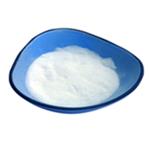
US $750.00/g2025-11-24
- CAS:
- Min. Order:
- 100g
- Purity:
- 99
- Supply Ability:
- 999

US $750.00-6500.00/G2025-07-04
- CAS:
- 850-52-2
- Min. Order:
- 100G
- Purity:
- 99
- Supply Ability:
- 9999
